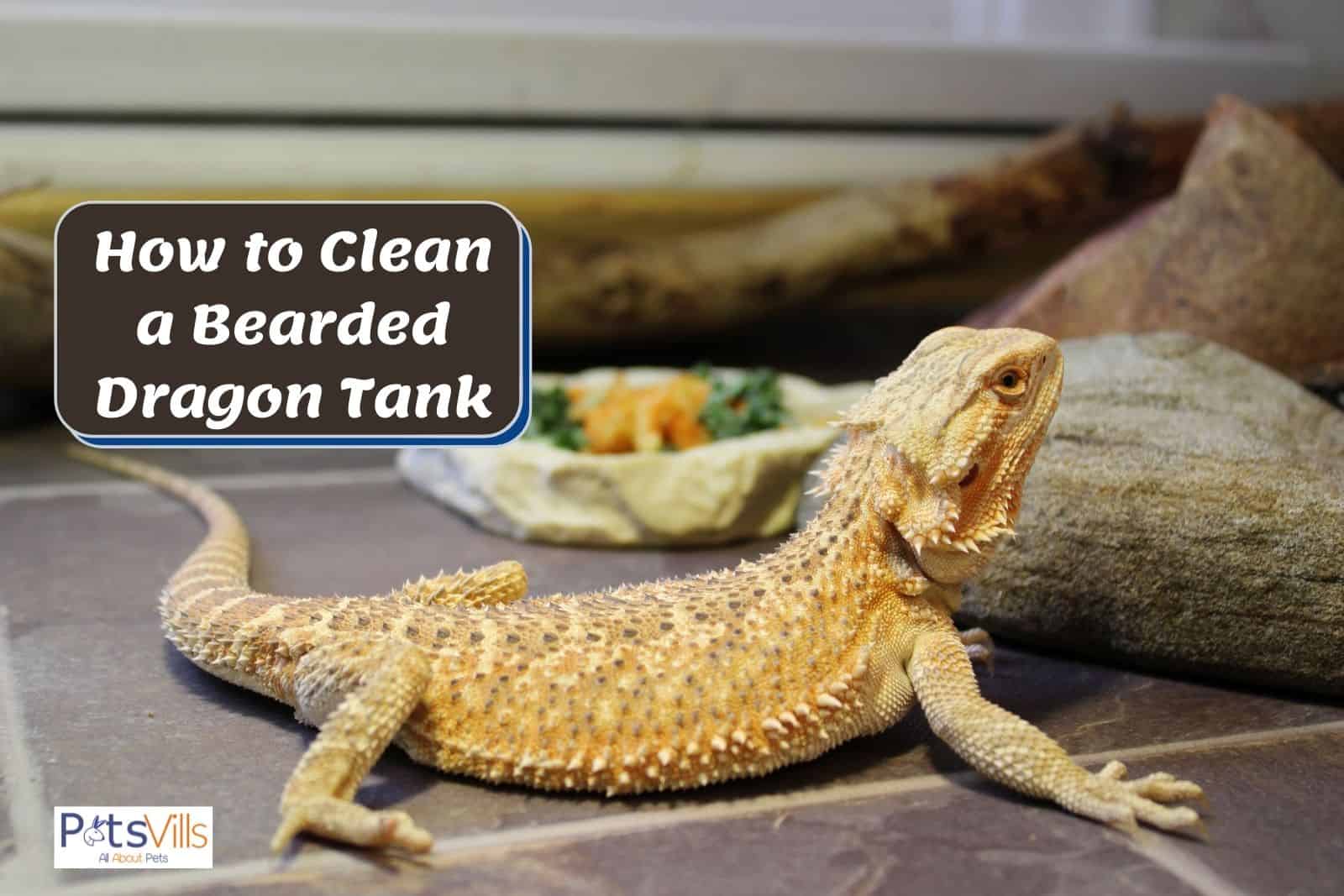During my first run as a bearded dragon owner, I didn’t know how to clean a bearded dragon tank. I even thought it didn’t need cleaning until I saw that my enclosure was dirty.
The process needs a much more comprehensive approach.
And that’s why in this guide, I will be detailing the complete process of deep cleaning your dirty tank.
Check More: Bearded Dragon Tank Ideas
Table of Contents
What Products Do You Need to Clean a Bearded Dragon Tank?
To start, let me unravel what to clean an adult bearded dragon enclosure with. In cleaning your tank, what you want to use needs to disinfect, remove odor, and remove stains from the enclosure.
In my first adoption, I ran to several pet stores trying to look for cleaning products and a guide on performing deep cleaning. You’re lucky because you don’t have to!
Here’s a quick list of products and tools to use for cleaning your bearded dragon tank setup.
1. Use Chemical-Resistant Gloves For Your Hands
These are gloves used to protect people from exposure to chemical substances –acid, among others.
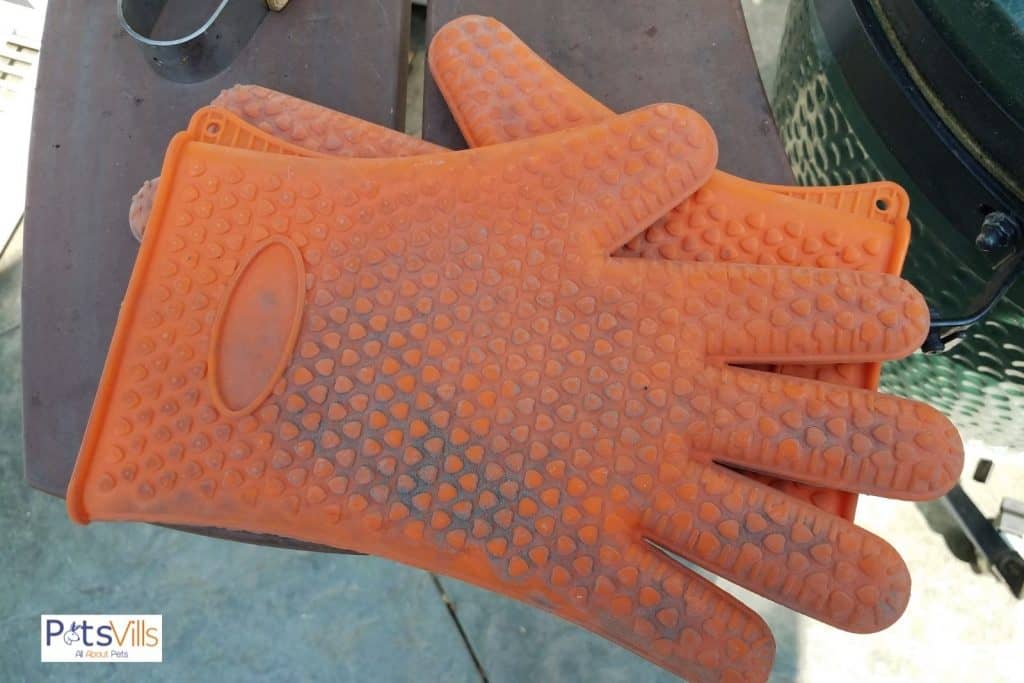
I use two (2) layers of laundry gloves. The laundry gloves I use are chemically resistant.
NOTE: Even if it’s layered, it doesn’t assure you that it’ll be able to protect you from any chemical leakage. Unless, of course, your laundry gloves are chemically resistant.
2. For Cleaning, Use a Microfiber Cloth
This is the material you want to use for cleaning, rinsing, and drying. You can purchase all different types and sizes of microfiber cloth in Walmart and other similar shops and stores.
3. Consider a Scrub Brush For Cleaning, Too
For the cleaning, it’s within your choice to use a scrub brush for a more vigorous cleaning process. Because of its stiff bristles, you’ll easily be able to remove dirt and stuck food within the enclosure.
My personal choice for cleaning is a scrub brush because it can remove even glued dirt or dried bearded dragon poop on the enclosure’s surface.
4. For the Cleaning Agent, Use a Non-Toxic Reptile Cleaning Solution/Disinfectant
There are cleaning solutions that are also disinfectants in the market. Purchasing this 2-in-1 product can save you a lot of time when cleaning.
Take note, though, that it costs a bit more expensive than a regular cleaning solution. You can buy these from pet stores, and they’re readily available.
For a regular cleaning solution, though, it’s totally fine! There’s no rule in the book that says you can’t use it. In fact, I use a bleach solution to clean and disinfect the tank.
You can also use white vinegar as a disinfectant.
NOTE: For a bleach solution, you need one (1) part of household bleach with ten (10) parts of water and store it in a spray bottle.
5. Use a Heat & Steam Cleaner For Further Disinfection
If you want to go further down the route of disinfecting, you can use a heat or steam cleaner to halt bacterial growth.
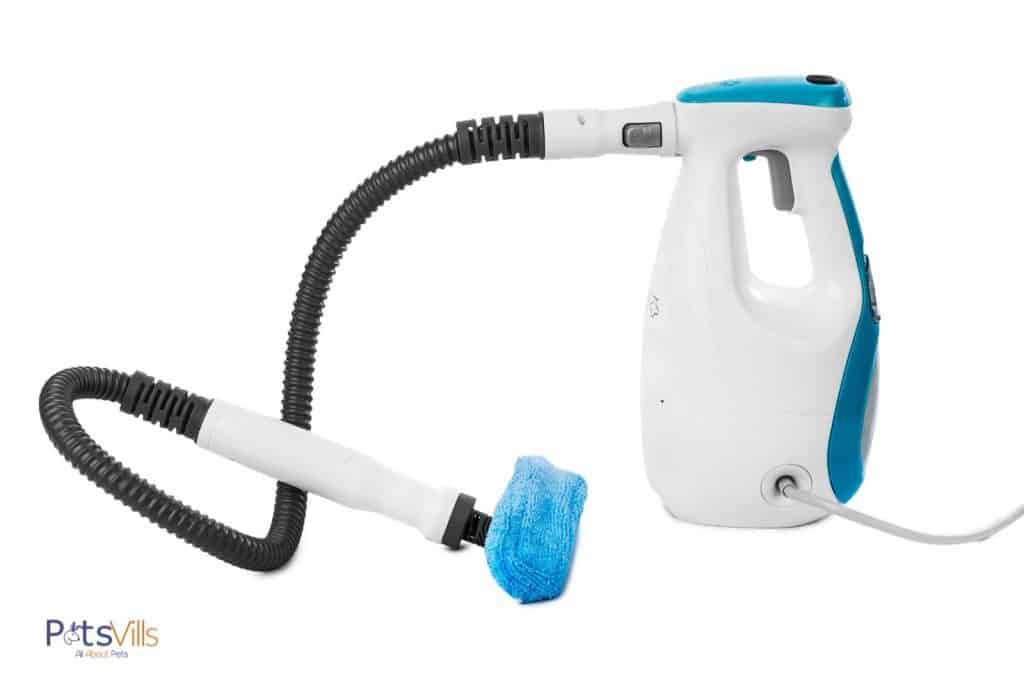
EXPERT’S NOTE: Daily cleaning (light or spot cleaning) and disinfecting can help keep your beardie away from health issues and respiratory infections (especially the baby bearded).
CHECK: How to Make a Bearded Dragon Enclosure
6. Consider Using Ammonia to Disinfect the Enclosure
For better disinfection [3], you can use household ammonia. You’ll find many benefits of ammonia –disinfection and odor eradication, among others.
I have household ammonia, and I use it at least once (1) a month when I thoroughly clean the entire tank.
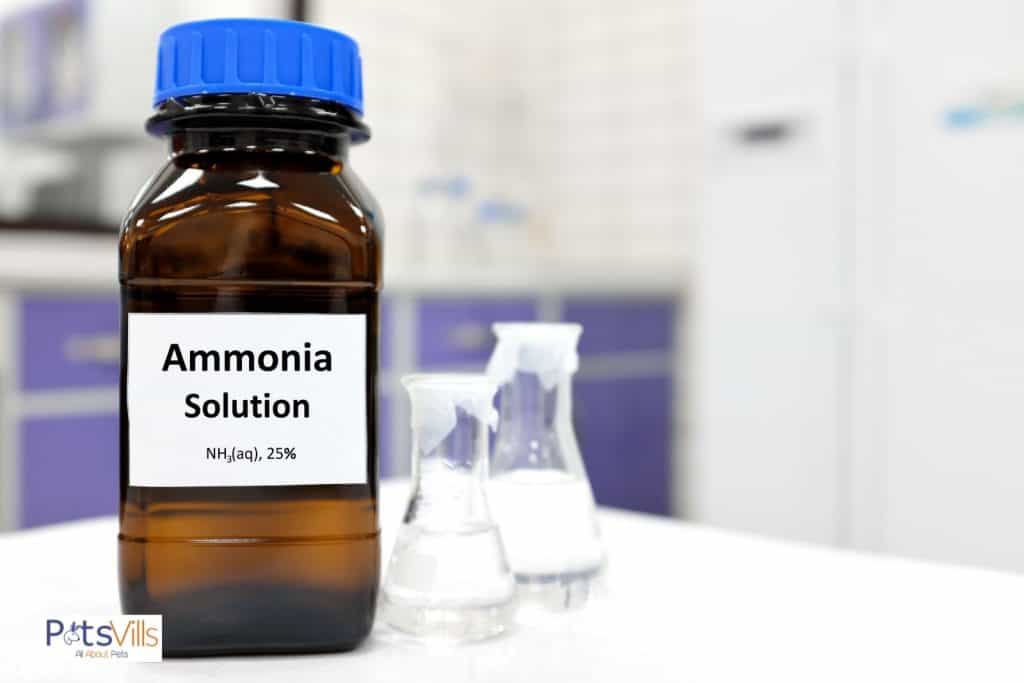
I like it because I’m able to get rid of the retained bearded dragon smell inside the reptile cage, and it’s effective in retarding bacterial growth.
Now that you know the different materials and products you can use, what’s the process? How can you properly clean your bearded dragon cage?
READ MORE: How Often Should You Take Your Bearded Dragon Out of Its Cage?
Having the right tank setup can make a huge difference in the health and happiness of your aquatic pets. Whether you’re starting from scratch or looking to upgrade, it’s important to do your research. Take the time to read ‘120 gallon tank‘ and make informed decisions about the perfect setup for your pets.
How to Clean a Bearded Dragon Tank in 5 Steps
With the vast knowledge I’ve had from years of experience taking care of and maintaining bearded dragons, I was able to come up with this guide.
Other than the fact that you need to perform weekly cleaning, other factors are involved.
Here’s a guide on how to clean your bearded dragon tank setup comprehensively.
Step #1: Remove All Organic Matter
Before going any further, you need to make sure that both your hands are clean[1]. My regular regime includes washing my hands with dish soap to keep them clean and disinfected.
Then, remove all organic matter in your bearded dragon tank setup.
These include uneaten food (mustard greens), dead insects, dragon poop, and other types of waste that can make your dragon uncomfortable.
QUICK NOTE: Take out everything that could contaminate and could be housed by bacteria inside the tank to keep your dragon healthy (including the reptile carpet).
Step #2: Take Out and Replace the Solid or Loose Substrate
The next thing you want to do is to remove and replace the substrate of the enclosure. Whether using a solid substrate or a loose substrate, it’s essential to keep it clean.
Take out the carpet or the bottom/base you’ve installed inside the cage, and then wash it. Debris of dragon poop could be there, so be sure to clean it thoroughly.
QUICK NOTE: If it smells even after drying out, replace it. Avoid using calcium sand, sand substrate, or gravel as the base because it can mess up their gastrointestinal tract[2].
Wood chips, wood shavings, and pebbles are also loose substrates, making them ineffective, which can cause multiple health issues.
The best substrates are solid substrates that aren’t high maintenance.
I typically replace substrates at least once (1) every two (2) weeks. This is a guarantee that you’ll have a clean substrate to add to the fresh feeling of your beardie.
Step #3: Clean and Disinfect the Food and Water Dish
Now that the food bowl and water bowl have been taken out, the next step is to clean and disinfect them.
The cleaning process is similar to how you clean plates, drinking glasses, and other kitchenware.
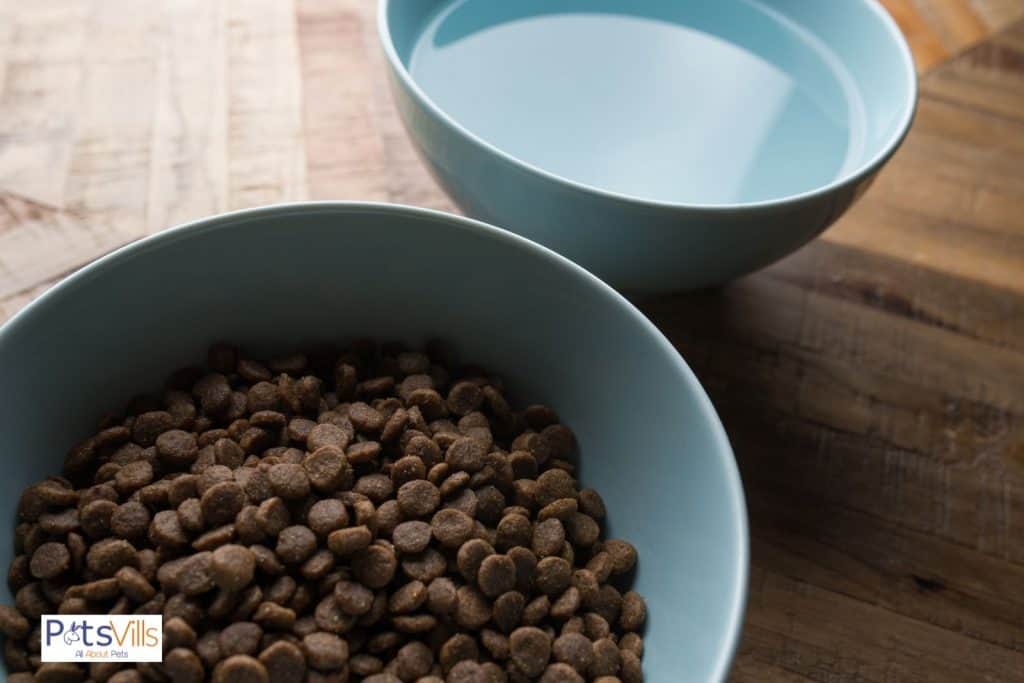
I use a dish soap mixture (soapy water) to clean it thoroughly and completely and wipe it with a clean microfiber cloth.
When doing so, you need to make sure that there are no marks of mustard greens left on your stable bowl! Rinse it with clean water after.
Step #4: Clean the Walls and the Base of the Enclosure
After that, the next thing you want to do is thoroughly clean the walls and the base (loose substrate) of your enclosure.
Here’s how you can clean tanks properly:
- Wet your microfiber cloth or scrubbing brush with warm water (you can use hot water).
- While wet, try removing the dirt stuck up on the glass.
- Then, using the cleaning solution, scrub the sides and bottom parts of the tank.
- When you’ve removed the stuck-up dirt, rinse it with a warm water solution.
- Dry it out by wiping it using a clean microfiber cloth.
NOTE: You can also let it dry out in the sun. I usually do it this way because microscopic bacteria are killed by heat, too.
Step #5: Disinfect the Cage Using Steam
When it’s dried out, disinfect the cage from top to bottom to avoid contaminating surfaces that have already been cleansed.
The best recommendation I can make for disinfection would be steaming it. Steam from the top of the enclosure, working your way to the bottom.
NOTE: If you have wood chips, wood shavings, and other things that can cause debris, take it out and replace it –don’t disinfect and put it back.
That’s just about it! That’s the process of how to clean bearded dragon tank glass. It’s a comprehensive procedure, but I guarantee that your tank will be good as new!
Here’s a quick clip detailing how to clean your bearded dragon substrate and tank thoroughly:
But how often should you clean your bearded dragon cage? Do you need to clean it like this daily?
How Often Do You Need to Clean Bearded Dragon Tank Setup?
Regular cleaning is necessary for the enclosure of your beardie. For the overall tank cleaning (the process we mentioned above), you should clean it at least once (1) every week.
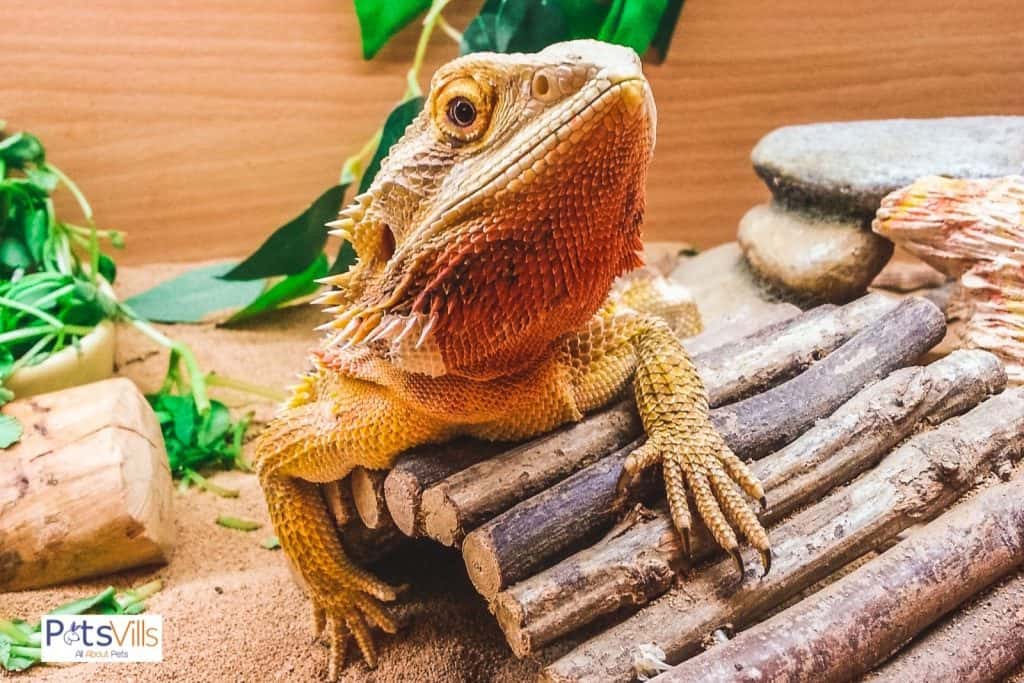
Yes, weekly cleaning is recommended for your bearded dragon cage.
Deep cleaning would include the replacement of the solid or loose substrate and the surfaces of the enclosure.
Daily cleaning is recommended for removing waste, cleansing water and food bowls, and minor disinfection, eliminating things that can make your dragon uncomfortable.
FAQs on How to Clean a Bearded Dragon Tank
Still, think you lack knowledge in cleaning it? Don’t worry! I was worse during the first few weeks of newly adopting a beardie.
Here are some other relevant questions related to cleaning a bearded dragon enclosure.
Is Dish Soap Toxic to Reptiles?
No, absolutely not. Dish soap or any other mild soap is safe for reptiles –bearded dragons in particular.
How Can I Make My Bearded Dragon Tank Smell Better?

You can make your bearded dragon enclosure smell better by eliminating the stuck odor inside it by cleaning it and disinfecting it.
You can use any disinfectant (ammonia or steam) so that the smell is neutral.
To Wrap It All Up
With this guide, we’re hoping to have answered your question of how to clean a bearded dragon tank.
With All the points we’ve gathered in this tutorial, you will never be worried about making your bearded dragon tank clean, odorless, and disinfected.
Resources
- 1. Caring for Your Pet Bearded Dragon [Internet]. Available from: https://cvm.ncsu.edu/wp-content/uploads/2016/12/Caring-for-your-Bearded-Dragon.pdf#:~:text=Maintenance%3A%20The%20enclosure%20should%20be
- 2. 2010. Available from: https://www.researchgate.net/publication/269653046_Gastrointestinal_Disturbances_in_a_Bearded_Dragon_Pogona_vitticeps
- 3. Outbreak of Salmonella Infections Linked to Pet Bearded Dragons | CDC [Internet]. www.cdc.gov. 2020. Available from: https://www.cdc.gov/salmonella/muenster-10-20/index.html
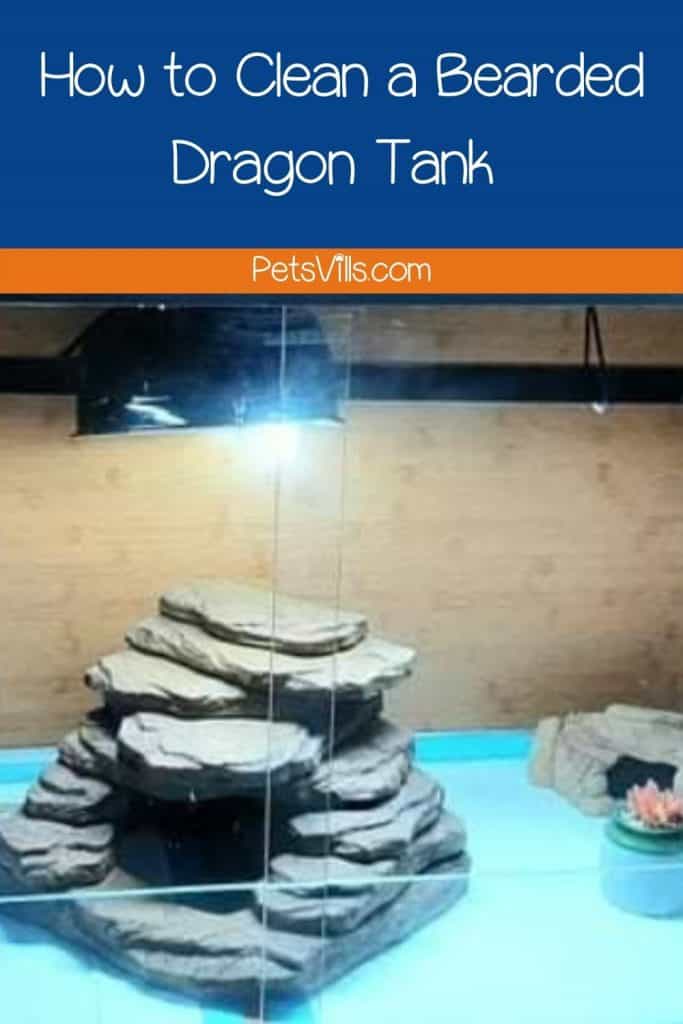
If you have more tips on how to clean a bearded dragon tank, let us know in the comments below!
Alina Hartley is a small-town girl with a ginormous love of bearded dragons. It all started with Winchester, a baby bearded who was abandoned at the shelter by his former owners because of a birth defect that caused one front leg to be shorter than the other. Alina originally went to the shelter looking for a guinea pig, but one look at Winchester and it was love at first sight. From that day on, Alina has dedicated her life to learning everything she can about bearded dragons. She loves helping new beardie parents start their incredible journey with these magnificent reptiles.
Follow her on:
LINKEDIN
TWITTER.
Read her latest articles HERE
Learn more about her HERE.

